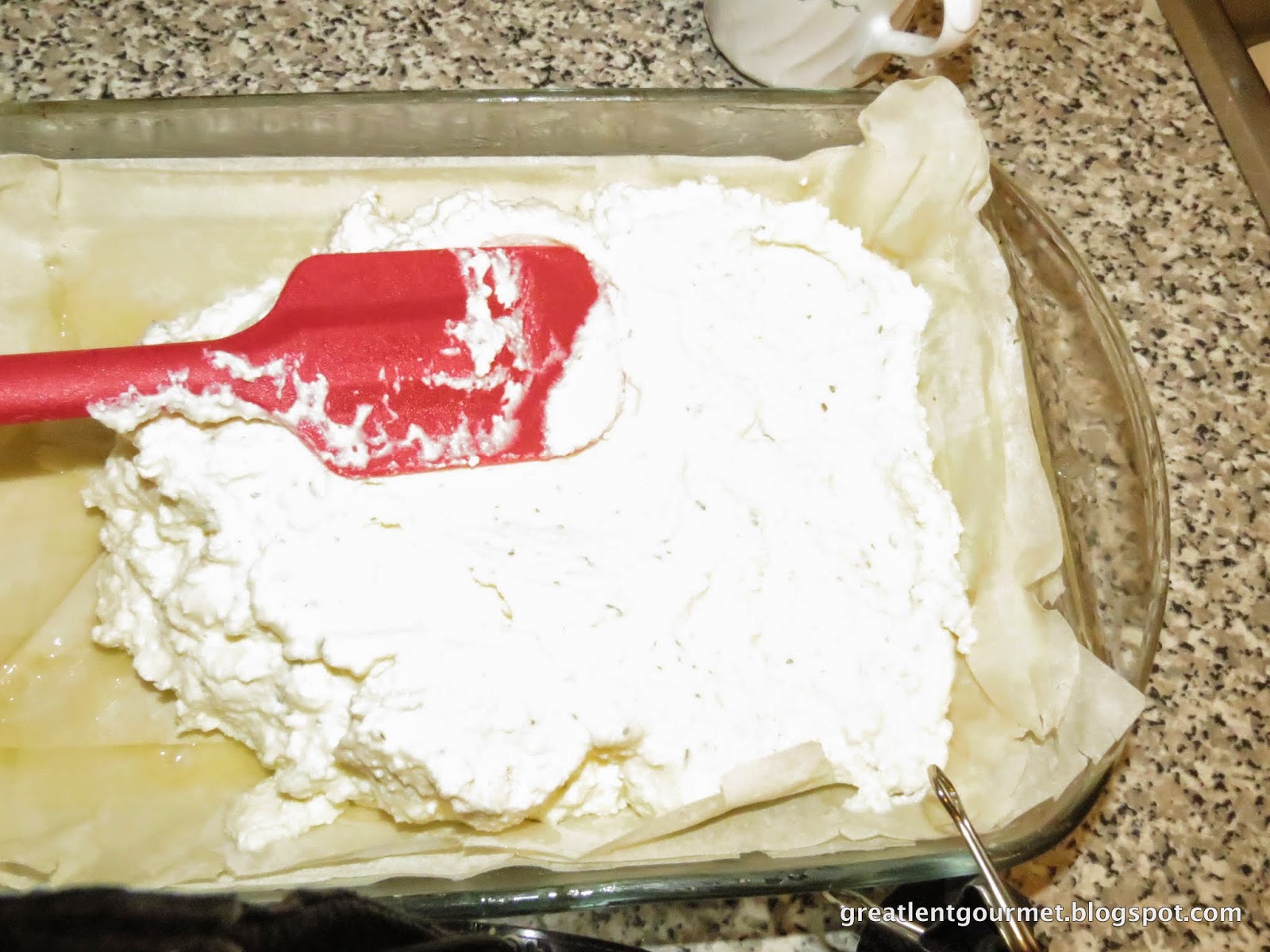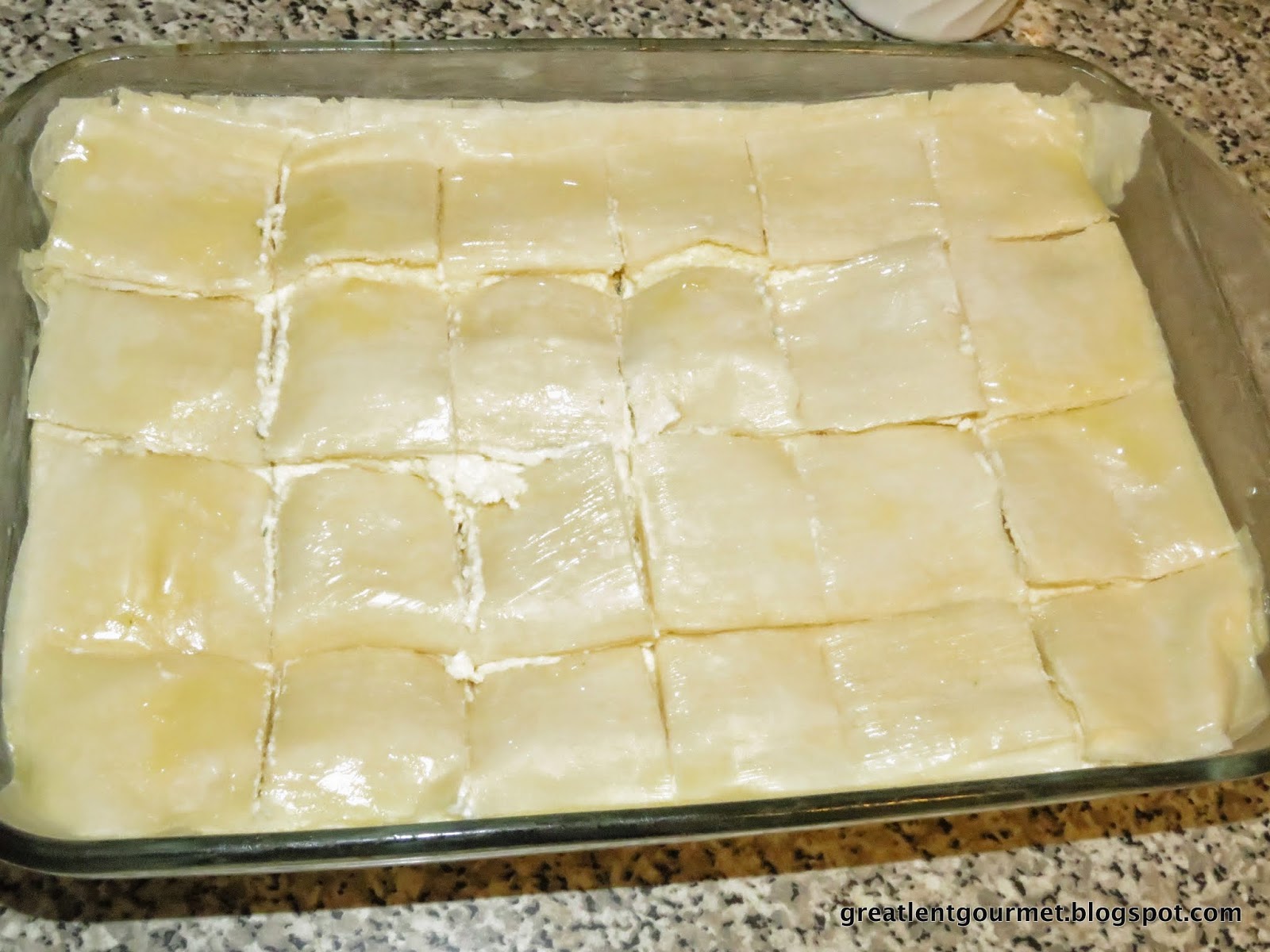| \ The icon of the Resurrection Source of the icon: http://25.media.tumblr.com/tumblr_lk505gq6291qcehl1o1_500.jpg  |
| Today our immediate family gathered at lunch to celebrate the Resurrection of our Lord about an hour north of Toronto. After singing "Xristos Anesti", we ate lamb that was cooked on a charcoal grill, mageritsa soup, roasted veggies, tzatziki, tyrokafteri, home made bread and of course, our contribution - the kontosouvli that is shown above. Above and beyond the meal itself, it was the love that we all felt in the presence of each other. We are truly blessed and thank the Lord for this each and every day! |
Xristos Anesti! After the Resurrection service late last night we took our φώς (light from the Anastasi), smudged the frame of our home's threshold and sat for our Agape Feast. Today is the day that we can enjoy our varieties of meats and goodies with family (and friends). It is the glorious day of Pascha. One of the things that we prepared yesterday so we could cook today was the Kontosouvli. This is the skewered pork that would typically have been put on a large souvla (large rotisserie), but we ended up using smaller, more individualized skewers to cook on the charcoal barbecue grill. We did not know the family was cooking two lambs! The charcoal grill worked very well, though, and we were all delighted with the results!
Yesterday, we picked up the meat from the butcher. We used pork shoulder that the butcher had cut into the chunks for us. Then, we made a marinade from oil, lemon, oregano, steak spice, salt, and pepper so the meat could marinate for a full day. Today, we skewered the meat and took it to Theio George's house where we were able to light the charcoal grill and cook it there, and the whole family was able to enjoy the smell and the taste!
So, what did we really have to do today? First, take the meat out of the refrigerator so it comes near room temperature before cooking. Since we travelled forty-five minutes in the car over the river and through the woods to get to our Theio's house, that was adequate time for the meat to warm enough. We did, however, pull it out of the fridge about 30 minutes before putting it all on the skewers so our hands would not freeze while handling the meat.
While the meat was warming, so was our grill! We took the time to light the barbecue, get the coals hot enough that they were hot white, and making sure that we had enough space for all the skewers. Lighting charcoal for an average size grill and waiting for it to get hot enough can take up to an hour (depending on how much charcoal you have). So, we lit the charcoal in the fire-starters and let that get hot while we prepared our skewers. Make sure to put the grill rack over the charcoals so the cooking surface gets hot, too.
The logical way to do this is the line up your work area. Have the skewers to one side, the meat to the other, and in the middle of the pan or platter on which you will put the raw meat skewers. It is likely that the marinade will drip all over the pan, so assure that there are sides on the pan tall enough to hold whatever drippings come from the raw meat. Any leftover marinade will be used, so do not discard it. We also prepared our lemon and oregano for the finished product. We pulled the lemons out of the refrigerator to get those to warm to room temperature. And, the oregano was pulled off the stems so it was ready to sprinkle on the cooked meat. The oil (in the background) is to make sure to oil the grill rack once it is hot.
Piece by piece, you must push the pork onto the skewer. Try to make the pieces all "face" the same direction. If some pieces are more flat than others, keep them together. The idea behind this is to maintain an equal cooking time for all the pieces on each skewer. It will take a little more time to pick out the right pieces for each group, but in the end it is absolutely worth it! If you are serving on full skewers, then the visual effect is also worth it!
Now it is time to get the meat on the grill! Start with one side. As that one side cooks, brush some of the leftover marinade all over the skewers. Brush generously. This will create a lot of smoke, but, mmmm, the smell…
Try to use the full surface of the grill so that the heat is held under the meat instead of being wasted by passing through the skewers.
Allow each side of the pork to cook for 10 to 15 minutes. When you start to see the charcoal colour and the crispy edges, that will indicate that the meat needs five more minutes on that side.
Once you see the charred edges, turn the meat. You will need to turn each skewer three or four times, depending on the shape of the pieces of pork. With each turn, brush the marinade on the side about to face the fire, and then brush on top, too. Just keep brushing marinade until you use it all. That is where all the flavour hides -- in the marinade.
When the meat is slightly charred on all sides, the inside is no longer pink, and if you are using a thermometer, the internal temperature of the meat reaches 160º F (71º C). Then, serve with a sprinkle of oregano and a squeeze of lemon. You can remove the skewers or allow the ones eating to remove their own piece of meat from the skewer.
Each piece should be succulent, moist, and flavourful. Each piece will tempt you to have another! And, if this is done properly, there will be no leftovers to worry about for tomorrow.
Enjoy the feast! Christ Is Risen! Truly He Is Risen!
Holy Fire- Αγιος Φως-Благодатни Огањ-4E TV - 2012 -
Broadcast from the Greek television channel 4E from the Church of the Holy Sepulchre, Jerusalem
Language of the narration: Greek
Source of video: https://www.youtube.com/watch?v=OTjy4cCPhNY





















































